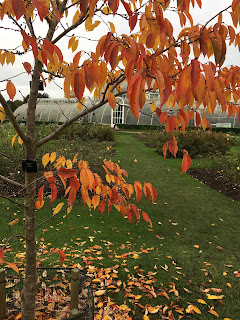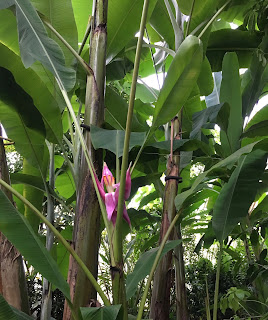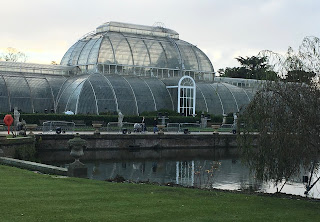Wednesday, 7 September 2022
The Ice House at Kew - by Jeannie Waudby
By the 19th Century ice from Siberia was brought by canal. It's strange to think of a time when ice had to be harvested and stored now that we can easily freeze it ourselves. Back in Georgian times, it was a natural resource from the winter lake and the colder weather, and the energy used came only from human beings. Standing in the cold silence under the Ice House dome, I thought what a great setting for a story scene it is, and I used it in the 19th Century book I have been working on. This made me think of this week's writing challenge. WRITING CHALLENGE Set your story in this brick Ice House. There are two characters inside. They have a wooden cart, an ice pick and a lantern, as well as lots of ice, sacking and straw. But the door is locked - from the outside! This seems like a scary scenario, but it doesn't have to be. You could make it funny, moving or even romantic. What happens? Jeannie Waudby is the author of YA love story/thriller ONE OF US and has been working on a YA novel set in Victorian times. jeanniewaudby.com @JeanWaudby
Thursday, 18 November 2021
Contrasting a peaceful setting with an action scene - by Jeannie Waudby
I wanted to write a sinister scene in which one character seems to have all the power. My story is set in 1848 and initially this scene was set in an upstairs room in an inn. But then I read a feature on the Palm House at Kew Gardens – a place I often visit – and I was intrigued to see that it first opened in 1848. It was always for the public to enjoy since by this time Kew Gardens was a botanical garden, open to everyone.
I could imagine the amazement Victorian Londoners must have felt to see all these beautiful tropical plants for the first time: hands of green bananas, mangoes, palm trees reaching up to the glass roof. I thought about the people wandering through the glasshouse in their colourful and elaborate clothes.
To me, the tropical plants feel like home because I saw many of them growing outside in Hong Kong when I was a child. I know that Kew is preserving plants against extinction and climate change. But to the character in my book, from the north of Scotland, the plants might have looked strange, exciting and larger-than-life. I thought of the dark side of British exploration to tropical countries in the nineteenth century and already a sinister note felt present in this setting, in spite of the gently dripping leaves and the gorgeously coloured tropical flowers.
Sometimes an obviously scary setting enhances a scary scene – a chase at the top of a skyscraper, through dark woods or in twisting tunnels. They tap into fears we may already have: vertigo, the dark or claustrophobia. But it adds an element of surprise to set a scary scene in a peaceful setting.
Writing challenge
This week’s writing challenge is to write a high-stakes chase scene set in a surprising setting. You can choose who is the ‘good’ character – the pursuer or the pursued. Instead of a scary environment, choose somewhere that would normally be a tranquil space: a library, a hospital, a place of worship or a garden for instance. Or a glasshouse like the Palm House.
Use the things in your setting to make the scene come to life: tumbling books, rolling trolleys, galleries or pews for instance. You can use the specific sounds of these places too: silence disturbed, beeping machines, chanting or singing. The more peaceful the setting is to begin with, the greater the shock value when you disturb it with your characters crashing through.
One Of Us by Jeannie Waudby is a YA thriller/love story, published by Chicken House. It was shortlisted for the Bolton Children's Fiction Award and the Lancashire Book of the Year 2016 and has been adapted by Mike Kenny as a play in the Oxford Playscripts series.
One Of Us is published by Chicken House
The Oxford Playscripts play is published by Oxford University Press
For more information about Jeannie and her books visit her website.
VIKING ATTACK! Write a DUAL NARRATIVE ACTION SCENE
VIKING ATTACK! Write a DUAL NARRATIVE ACTION SCENE First, watch the Time Tunnellers video about the Viking Attack on the Holy Island of L...

-
VIKING ATTACK! Write a DUAL NARRATIVE ACTION SCENE First, watch the Time Tunnellers video about the Viking Attack on the Holy Island of L...
-
That the Paralympics rose out of such a dark place, from the ashes of the Second World War, wounded men and a fugitive from the Nazis, says ...
-
On Thursday July 4th, the U.K will go to the polls to vote in the General Election. Eligible voters will select from a list of candidates wh...















